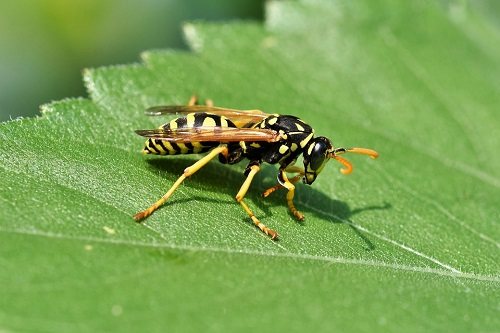Bee
This is one of those insects that bring invaluable benefits to humans. They are loved by many... And internationally recognized as the most hardworking insects.
The bee's body is painted in black and yellow stripes, there are wings and a proboscis, with which they collect nectar (and, with the help of special saliva, turn it into honey). Every bee has a stinger, which is located in the back of the body; it serves for protection. When a bee thrusts its sting into an enemy, the sting remains in the victim, and the bee dies.
Interesting facts about bees
- A bee can sense a flower with nectar within one kilometer.
- The world's first beekeepers were the Egyptians.
- The most dangerous species of bees lives in Australia.
- Bees have a very highly developed sense of smell. They distinguish and perceive odors 1000 times stronger than humans. They are able to smell the scent of flowers at a distance of 1 kilometer.
- In order to collect just 1 kilogram of honey, a bee needs to visit 10 million flowers, make 150,000 flights and fly 300,000 kilometers.
- In one day, one bee can collect pollen from 7,000 flowers. To get just 100 grams of honey, a bee must fly a distance of 46,000 kilometers. This is the same distance as around the Earth at the equator.
- A bee swarm can weigh up to 7-8 kg, it consists of 50-60 thousand bees, having 2-3 kg of honey in their crops. During inclement weather, bees can feed on honey reserves for 8 days.
- A honey bee flaps its wings 200 times per second. She needs to make 11,400 strokes per minute to get the characteristic buzzing sound.
- A bee has 5 eyes. Three at the top of the head and two at the front.
- Bees have many enemies and “freeloaders”, so the entrance to the hive is reliably guarded by guards who are ready to attack an uninvited guest at any moment. No bee can enter someone else's hive. Each hive has a special smell that is not detectable by humans. Each bee stores this scent in a special cavity in its body. Flying up to the entrance, the bee opens it and presents the smell to the guards as its business card or pass.
Dragonfly
The dragonfly is an equally beautiful insect in nature. You can meet a dragonfly in the summer, on the shore of a reservoir. They come in different colors: black, white, blue and green.
The dragonfly has 4 wings, two of which are slightly longer; they serve as its controls, literally like a steering wheel in a car. The eyes of a dragonfly are facets, shimmer with all the colors of the rainbow and occupy almost the entire space of the head; they consist of small eyes. There are approximately 28 thousand of them!
We talked about the dragonfly’s extraordinary vision when we shared our impressions of visiting the science museum.
Interesting facts about dragonflies
- In Japan, the dragonfly used to be a sign of victory.
- The dragonfly has a surprisingly good appetite; it can eat about 40 flies in an hour.
- Dragonflies lay eggs in water. Once hatched, the larvae can live underwater for two years.
- The wings and body of a dragonfly are designed in such a way that it is not only able to withstand long migrations, but can also hover in the air, fly sideways, backwards, forwards, at any angle and in any direction.
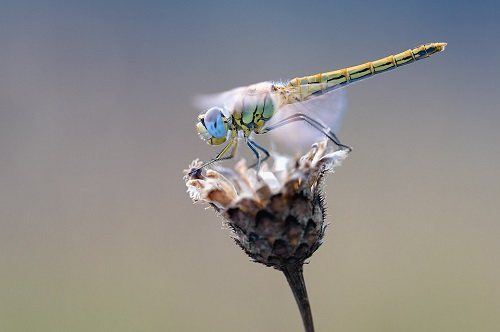
Grasshopper
These are green insects that hide in thick grass. They have large paws that allow them to jump high. It is noteworthy that the grasshopper’s legs contain a hearing organ. Grasshoppers feed on grass and fruits. But there are species of grasshoppers that eat small insects.
Interesting facts about grasshoppers
- In Malaysia there lives a species of grasshopper whose size exceeds 25 cm, and they jump 5 meters in length.
- There is a species of grasshopper called "warthogs". This species treats warts by biting a wart on a person's body, they leave saliva that heals.
- In North Africa, there is a species of efgaster grasshoppers; when they see an enemy, they shoot their blood at him in order to knock down the enemy and have time to escape.
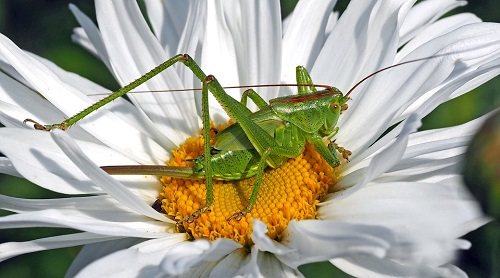
Butterfly
Let's start with the most beautiful species - Butterflies. Butterflies feed on the nectar of flowers, thereby pollinating plants.
The butterfly is known for its amazing metamorphoses. In the summer season, they lay eggs in the ground or on plants, from which the caterpillar hatches; after a while, the caterpillar enters the pupa stage (this is a small cocoon in which the future butterfly develops). The cocoon hangs practically motionless until the fruit ripens, and then a beautiful butterfly hatches.
It’s interesting that I talked about the butterfly here and in my favorite author’s book, “The World of Insects.”
Interesting facts about butterflies
- There are many legends about butterflies; in particular, in ancient Rome they believed that a butterfly was a flower petal that was torn off by gusts of wind
- The largest butterfly is the South American moth Tizania agrippina, its wingspan is up to 31 cm! (By the way, we already admired such a giant butterfly in the life-size book “Compare!”)
- And the wingspan of the smallest butterfly - acetosia - is only 2 mm.
- Butterfly wings are made up of tiny scales! Each of which has only one color. And the scales, like a mosaic, form complex patterns of wings.
- Butterflies' taste buds are on their paws.
- The eyes of a butterfly, like an ant, are made up of facets.
- To take off, the butterfly first flaps its wings in place to heat its body to a temperature above 30-35 degrees.
- Butterflies feed on flower nectar, honey, pollen, manure, fermented fruits, and even human sweat! If a butterfly comes to visit you, you can treat it with sugar syrup.
- Butterflies don't sleep. But they rest and during rest they may not move at all.
- A butterfly is known to have 4 stages of development: egg, caterpillar, pupa and butterfly.
- By the way, some caterpillars feed on poisonous plants. The butterflies that hatch from them turn out to be poisonous to birds!
- In Japan they believe that seeing a butterfly in the house is good luck. There is even a special “butterfly dance” that opens all holidays and ceremonial processions.

For more information about the butterfly, look here:
How to make a butterfly with your own hands
Poems and riddles about a butterfly
Ladybug
In nature, it is not difficult to recognize this insect. Even the smallest child is friends with the ladybug. Probably each of us said:
“Ladybug, Fly to the sky, There your children eat candy, they give it to everyone, but they don’t give it to you.”
It turns out that the ladybug is not so harmless. She is a predator, feeding on aphids, crickets, spiders and other insects that harm plants. This type of beetle brings great benefits to our nature.
Interesting facts about ladybugs
- The French believed that the ladybug protected against misfortune; they wore talismans with a design of this insect.
- In the Czech Republic, it was believed that a ladybug promises good luck.
- During flight, a ladybug makes up to 85 wing beats per second.
- During its life, this bug lays up to 2000 eggs, and some of them are both fertilized and not. Unfertilized “empty” eggs serve as food for the young.
- Ladybugs overwinter, gathering in large colonies under stumps, stones, in tree crevices...
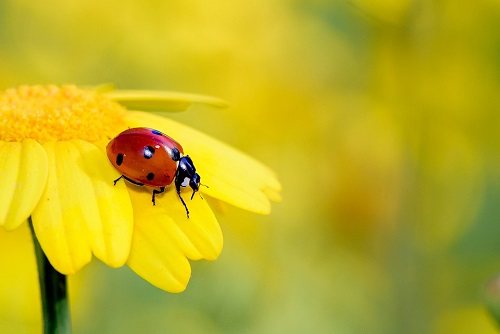
Ant
One of the social insects. The ant's head, chest and abdomen are connected by a thin stalk; it has six legs and a pair of jaws, which are used for grinding food and protecting it from enemies.
Ants live in flocks, each of them is divided into castes that perform their own functions: they build a nest, get food, breed offspring, and some types of ants have their own castes of soldiers, they are distinguished by especially large jaws.
Interesting facts about ants
- Ants can carry up to 5,000 times their own weight.
- Ants have strict social divisions. The males and the queen have wings before the birth of their first children.
- Ants have a chitinous external skeleton, which makes them almost impossible to crush.
- At the ends of the legs, consisting of five parts and three joints, there are serrated hooks, thanks to which the ant can walk not only on a vertical surface, but also on glass and smooth ones.
- Ants can build living bridges by interlocking with their paws and jaws. Such a bridge can withstand a weight of 1.5 kg!
- Ants have compound vision, like a dragonfly, and three additional eyes. In this case, the ant sees objects located no further than 4 cm.
- The length of all the paths inside the anthill is about 7000 meters.
- One large ant family collects 8,000,000 harmful insects per year!
- Ants have different professions: among them are nannies, builders, and soldiers.
- To avoid getting tired, worker ants sleep for a minute up to 250 times a day!
- In its development, an ant goes through 4 stages: egg, larva, worm and ant.
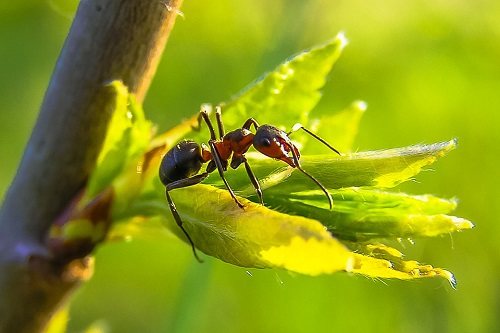
List of exhibitions and museums on the topic: “Insects”
- Butterfly museums:
— Museum of living butterflies "Tropical Paradise"
St. Petersburg, Muchnoy lane, 3 Phone: (812) 310-58-47, 923-24-70 St. Petersburg, Muchnoy lane, 3 Phone, 923-24-70
— Mindo Butterfly Garden:
- 1st st. Ropshinskaya, 17. st. m. Chkalovskaya
- 2. st. Pravda, Art. 12 m. Zvenigorodskaya or Vladimirskaya
Phone: 235-09-77, 575-70-70 Opening hours: from 11:00 to 20:00, Mon-closed.
The Museum of Living Tropical Butterflies provides a unique opportunity to find yourself in a tropical forest among paradise flowers. A great chance to take a close look at the butterflies that fly freely around and even land on museum visitors. You can buy live butterflies in the gift shop.
“Zoo of living insects” – Zoological Museum of the Russian Academy of Sciences St. Petersburg, Vasilievsky Island, Universitetskaya embankment, building 1
Exhibition of live insects and other arthropods. The exhibition, consisting of more than 50 terrariums, is open all days except Friday from 11-00 to 17-00.
Wasp
The wasp is a close relative of bees. Wasps are slimmer than bees and are lighter in color. Unlike a bee, a wasp can sting many times without sacrificing its life. Wasps also live alone, mainly in burrows on the ground, in tree trunks, or under the eaves of buildings.
To reproduce, the wasp pushes a fly or spider into the nest, paralyzes it with its sting and leaves a larva on the victim, which eats this victim as it develops.
Interesting facts about wasps
- Wasps can build their nests from paper, which they produce themselves.
- The wasp has five eyes: two large faceted eyes, located on the sides of the head and providing a wide angle of vision, and three small eyes on the forehead.
- Wasps become the most aggressive and “biting” in the hot season
- Wasp stings can pose a great danger to humans. In addition to severe pain, wasp venom is a strong allergen.
